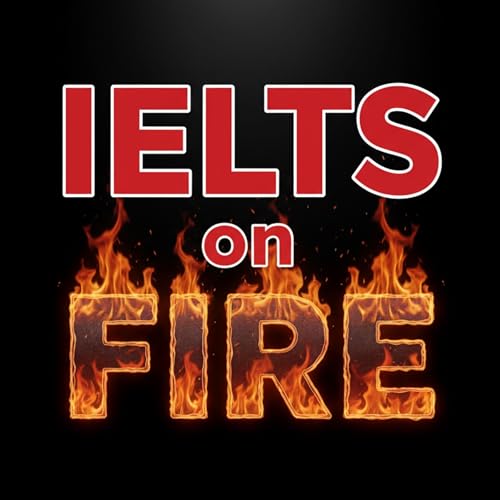Hey there, and welcome back to IELTS on Fire – your daily five-minute boost.
I’m Teacher Phil, and today we’re going to get real about one of the biggest questions I hear from students: What’s the actual difference between a Band 7 and a Band 9 in IELTS Speaking?
If you’re aiming for a top score, you’ve probably heard the band descriptors thrown around, but what do they mean in real life? Today, I’ll break it down, give you clear examples, and show you how to move your answers up a band. Let’s get your English ready for the big leagues.
Cue Card Question (read it slowly):
Describe a memorable trip you took.
You should say:
- where you went
- who you went with
- what you did there
- and explain why this trip was memorable
Alright, imagine you’re in the Speaking test and this cue card pops up. Let’s listen to a Band 7 style answer first, then I’ll show you what a Band 9 version sounds like. Notice the differences in fluency, vocabulary, and how natural the answer feels.
Sample AnswerBand 7 Style:
I want to talk about a trip I took last year. I went to the mountains with my family. We stayed there for three days. During the trip, we did hiking and cooked food together. I really enjoyed it because I don’t get to spend much time with my family, and the scenery was beautiful. The weather was nice, and I felt relaxed. I hope to go there again someday.
Band 9 Style:
One trip that really stands out in my memory is a hiking adventure I took with my family last autumn. We visited the Lake District, which is famous for its breathtaking landscapes and rolling hills. Over three days, we explored different trails, tried some local food, and even got caught in a sudden rainstorm, which actually turned out to be hilarious. What made this trip unforgettable was not just the stunning views, but the chance to reconnect with my family away from our busy routines. By the end, I felt refreshed and much closer to everyone. Honestly, I’d jump at the chance to do it all over again.
BreakdownSo, what’s the difference here? Let me break it down. The Band 7 answer is clear and organized, but it’s a bit basic and safe. The Band 9 response is longer, more detailed, and flows naturally – like a real conversation.
Here are three useful phrases you can steal for your own answers:
- 'One trip that really stands out in my memory is…'
- 'We explored different trails and tried some local food…'
- 'Honestly, I’d jump at the chance to do it all over again.'
These phrases show a range of vocabulary, connect ideas smoothly, and sound just like native speakers. Also, notice the use of expressions like stands out in my memory, breathtaking landscapes, and jump at the chance. That’s the kind of natural language that pushes you up to Band 9.
And the best part? The Band 9 answer doesn’t just describe – it adds feelings, reflections, and little stories, which make it more engaging and fluent.
Quick Practice ChallengeNow it’s your turn. Grab your phone and record yourself answering this cue card:
Describe a memorable trip you took.
Try to speak for one to two minutes. Focus on adding details, linking your ideas, and using at least one of the native phrases we covered. After you’re done, listen back and ask yourself: Does this sound natural? Did I share my feelings, not just the facts?
Remember, practice is where your fluency is built. You’re not aiming for perfect, just a little better each time.
That’s it for today’s episode of IELTS on Fire. Tomorrow, we’ll dive into powerful vocabulary for describing people. Keep practicing, and don’t forget – your fluency isn’t born, it’s built. Let’s set your English on fire!
 5 分
5 分 5 分
5 分 4 分
4 分 5 分
5 分 5 分
5 分 4 分
4 分 5 分
5 分 5 分
5 分
